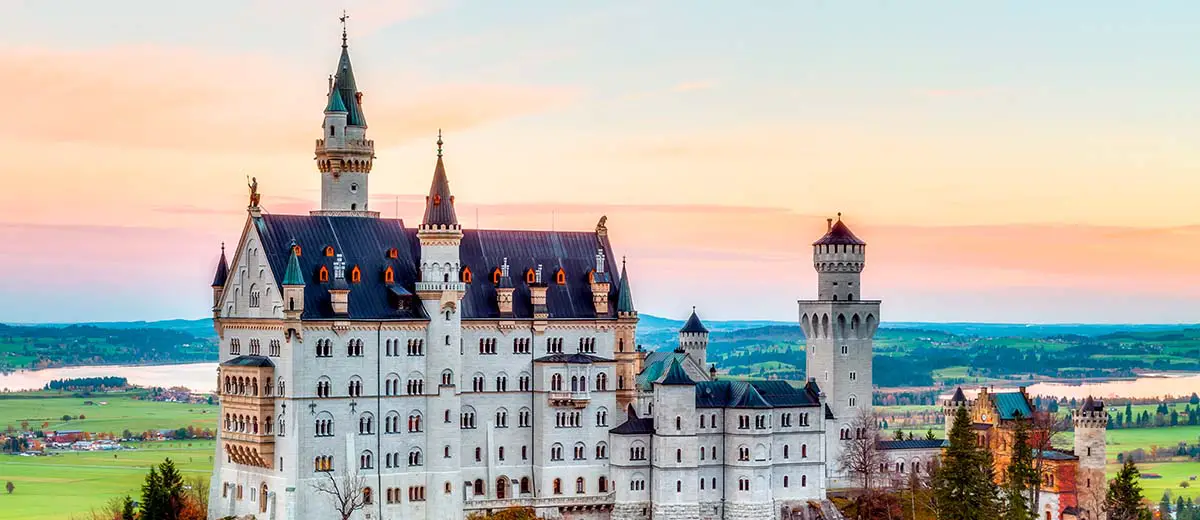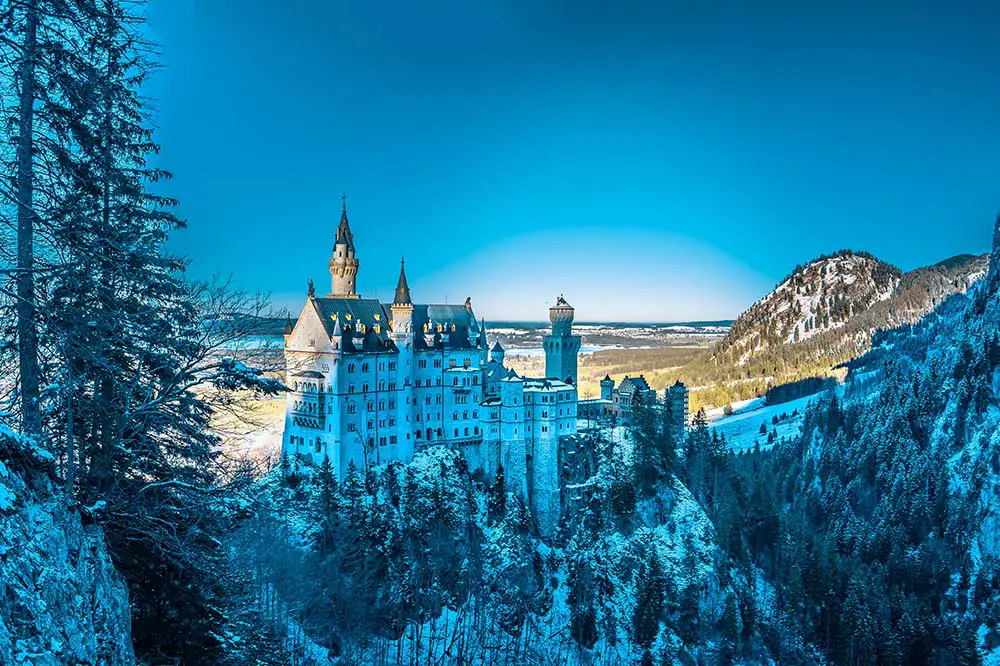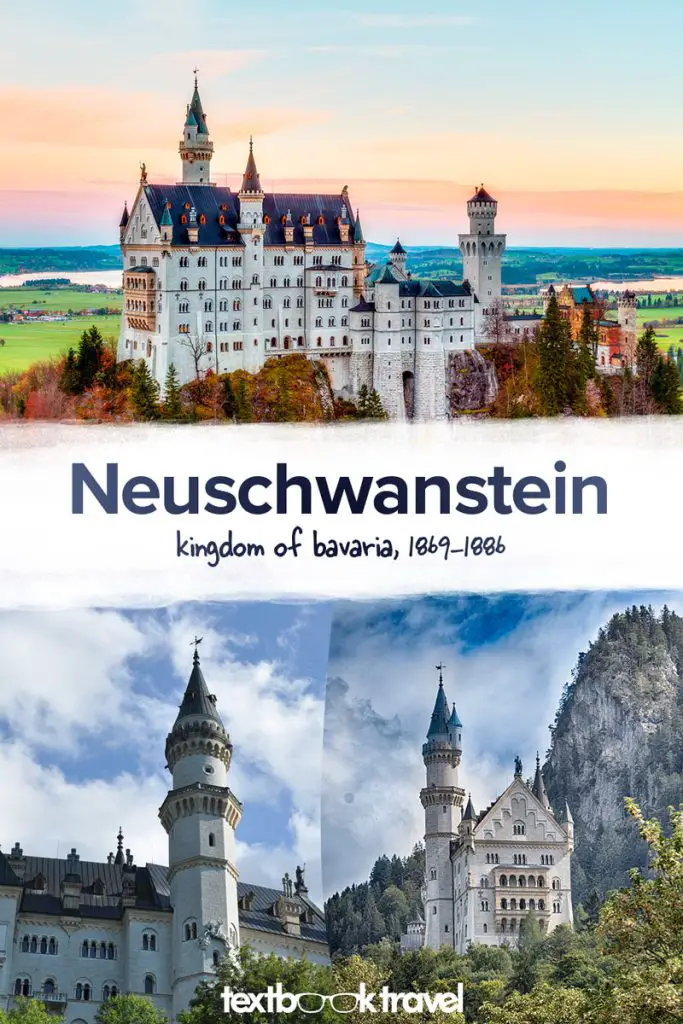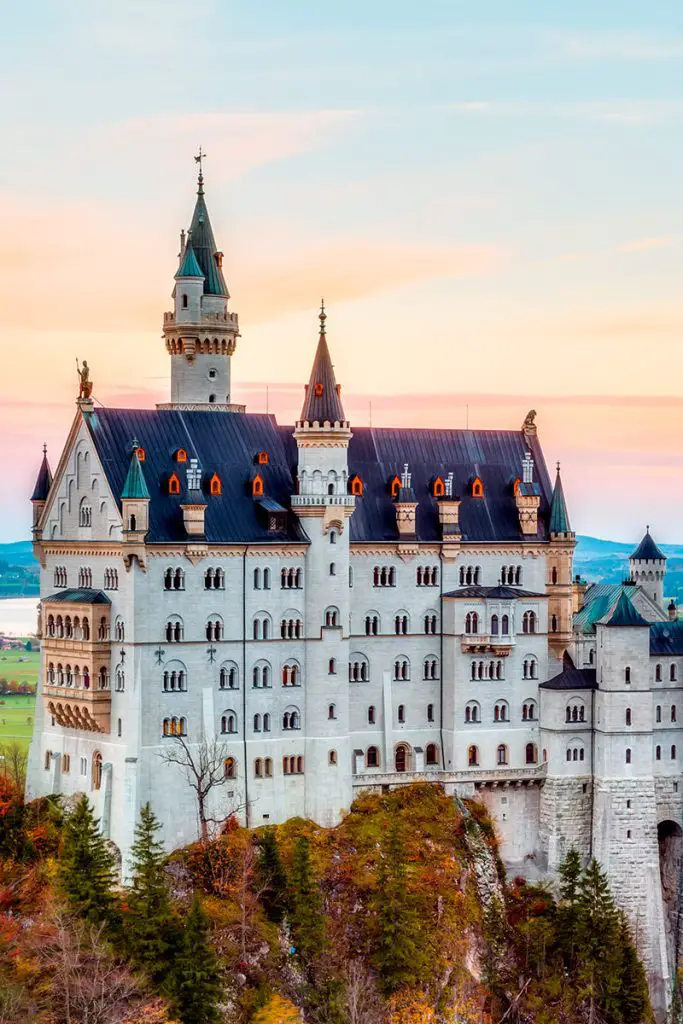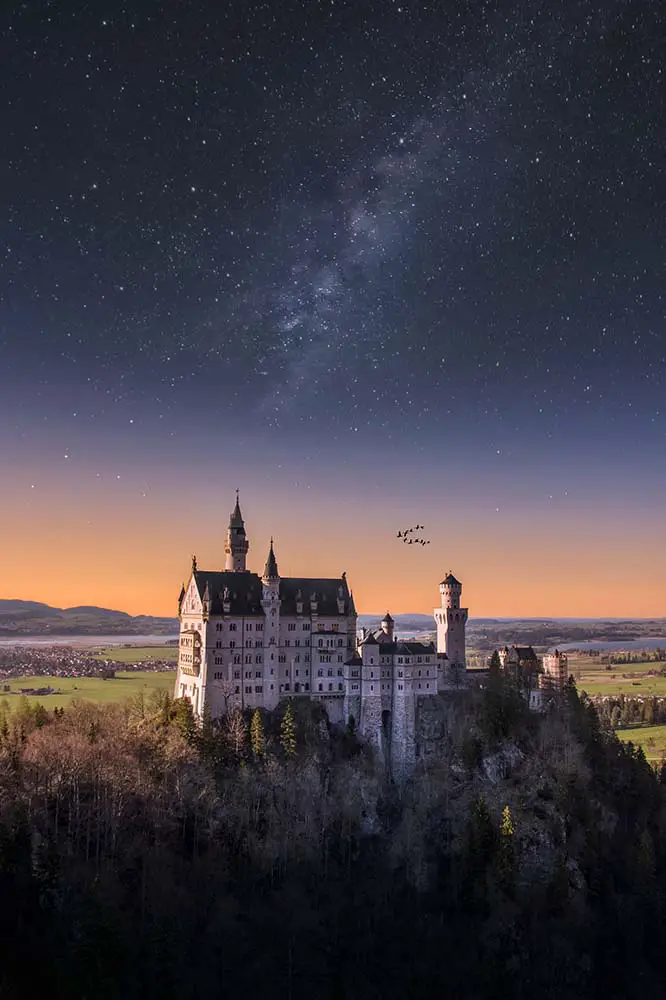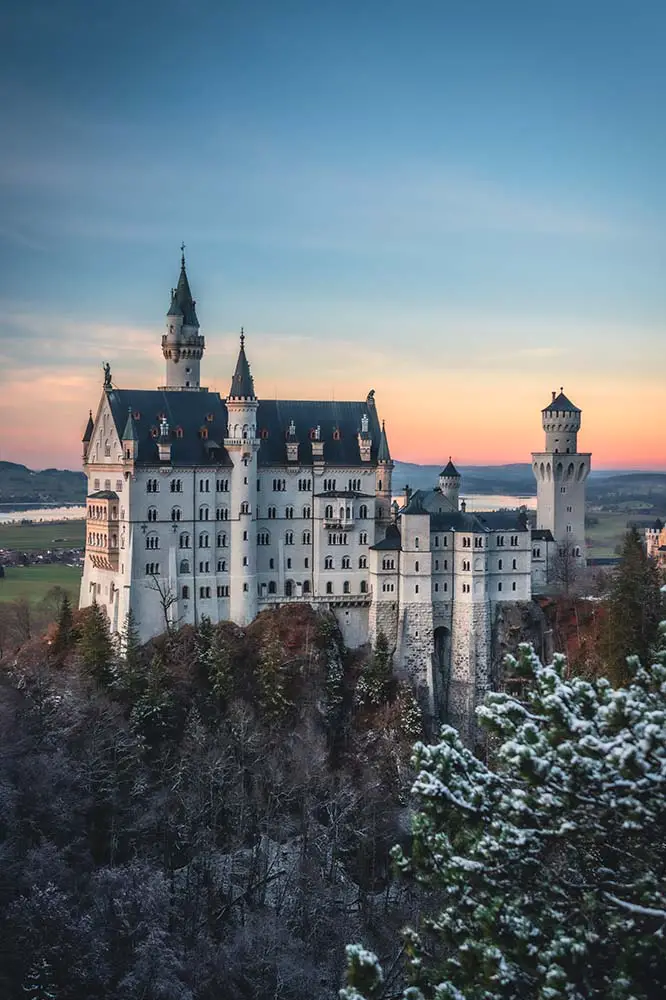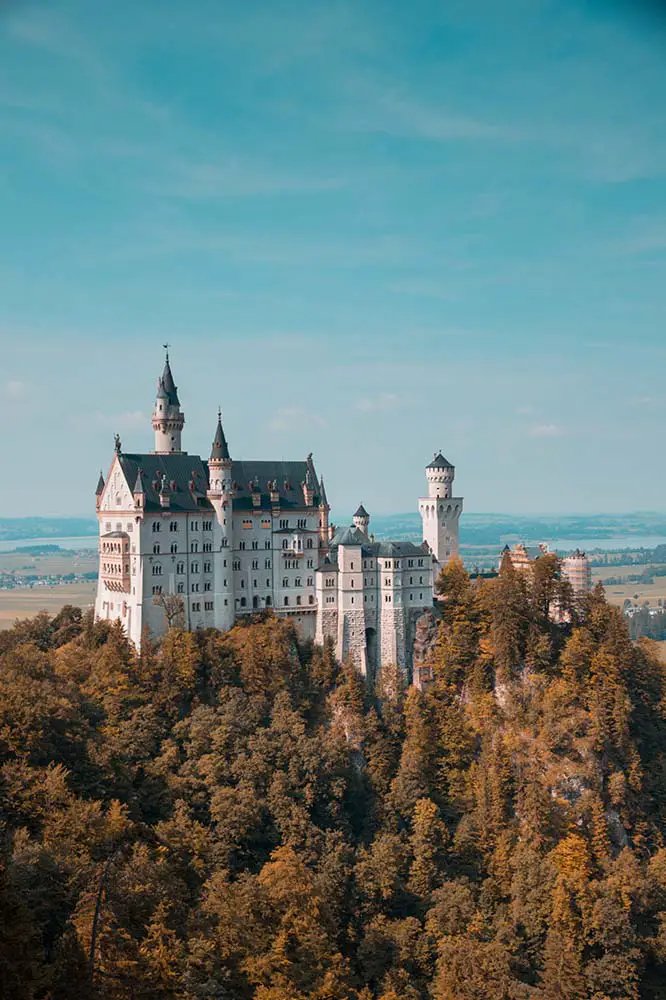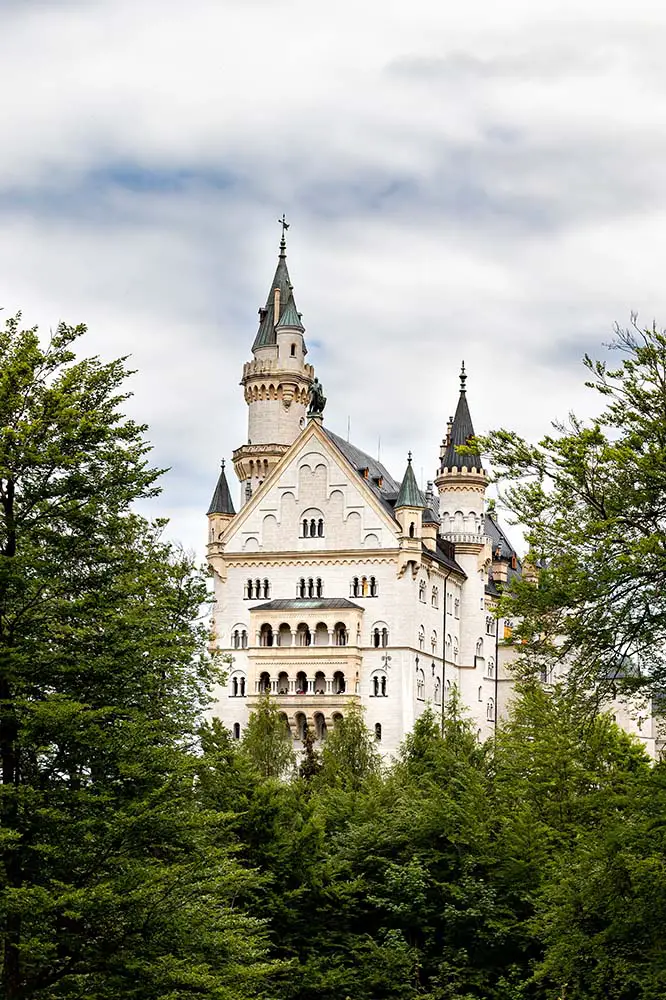Neuschwanstein Castle | Kingdom of Bavaria, 1869-1886
Like Portugal, at the turn of the 19th century, Germany was experiencing a juxtaposition between political upheaval and Romantic expression. At this point, Germany, as we know it today, did not exist; it was made up of a series of independent states that included Bavaria, the largest state in modern-day Germany. In 1864, Ludwig II ascended to the throne at the age of 18 and would rule Bavaria until his death in 1886. By far his greatest legacy is found at the very southern tip of Germany overlooking the Austria border.
Left: Bharat Patil on Unsplash & Right: Simon Maisch on Unsplash
Enamoured with the castle architecture of the German Knights, in 1869, Ludwig set out to build a sanctuary to end all sanctuaries in the mountainous region over which he ruled. He spent much time as a child in a castle called Hohenschwangau and wrote in a letter to the famous composer Richard Wagner “this castle will be in every way more beautiful and habitable than Hohenschwangau”. King Ludwig named the castle New Hohenschwangau and it wouldn’t adopt the moniker Neuschwanstein until after his death in 1886.
Excuse me! Are you on Pinterest?! Here are a couple of pins!
Gallery
This post is part of an expanded series taken from 37 Wonders of the World in Chronological Order. You can click the link to read more or navigate between individual photo posts beneath the gallery.
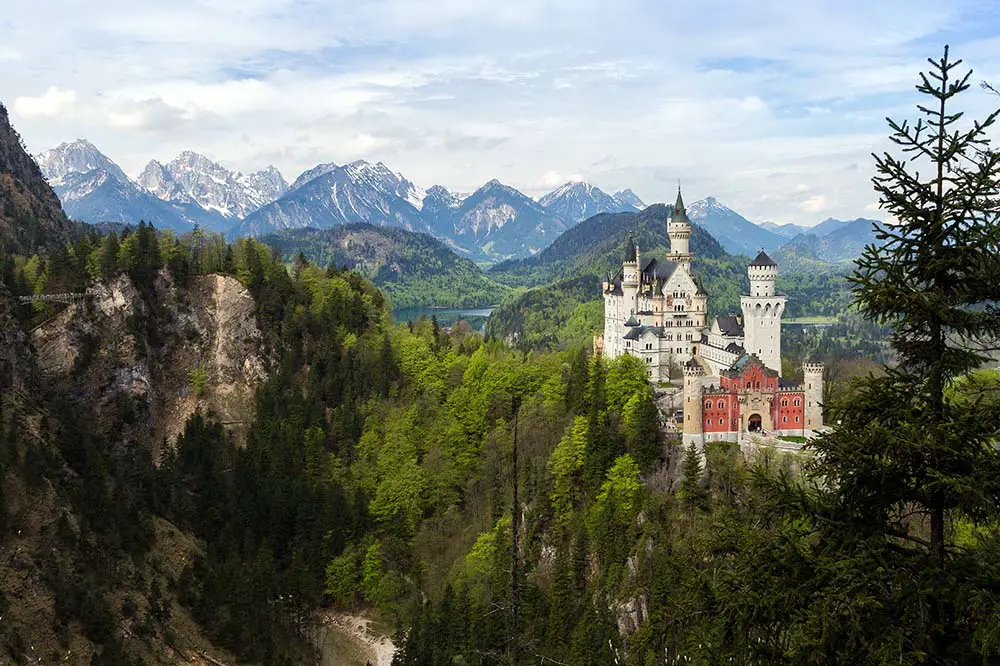
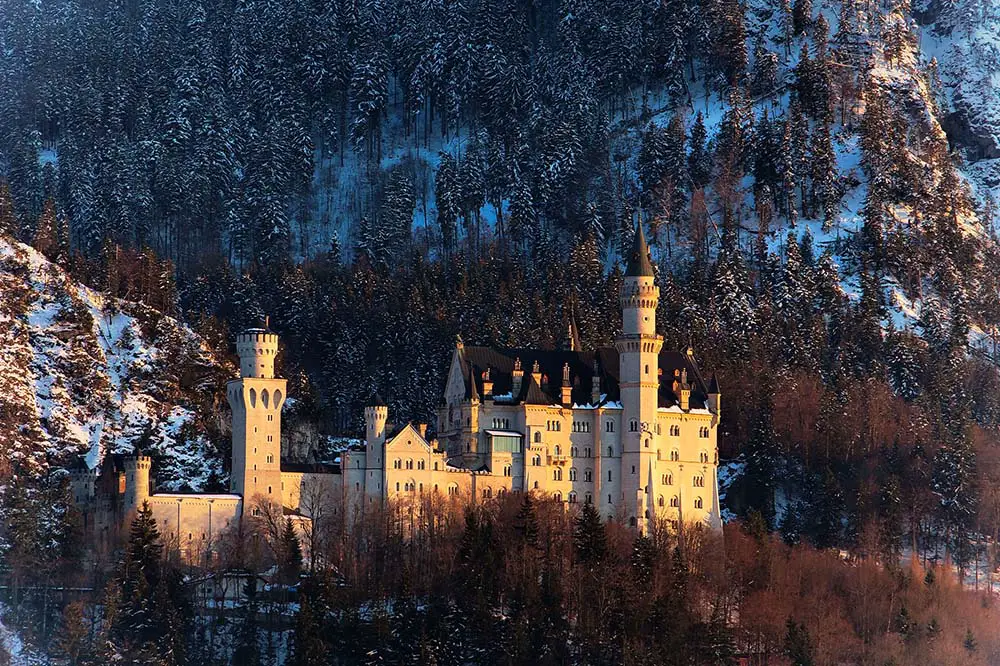
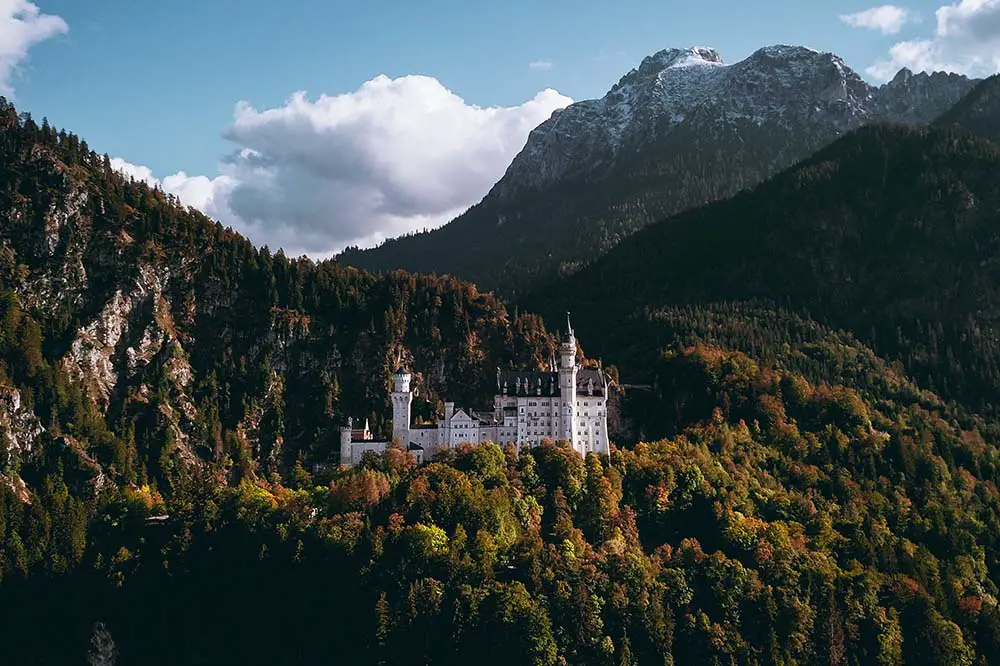
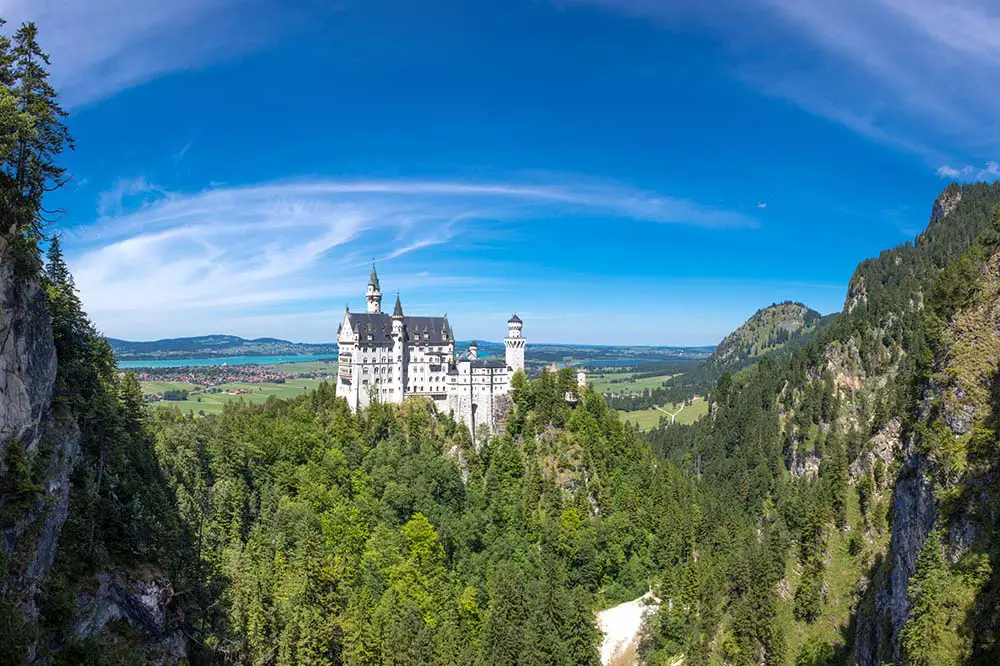
Left: Massimiliano Morosinotto on Unsplash & Right: Donnie Ray Crisp on Unsplash

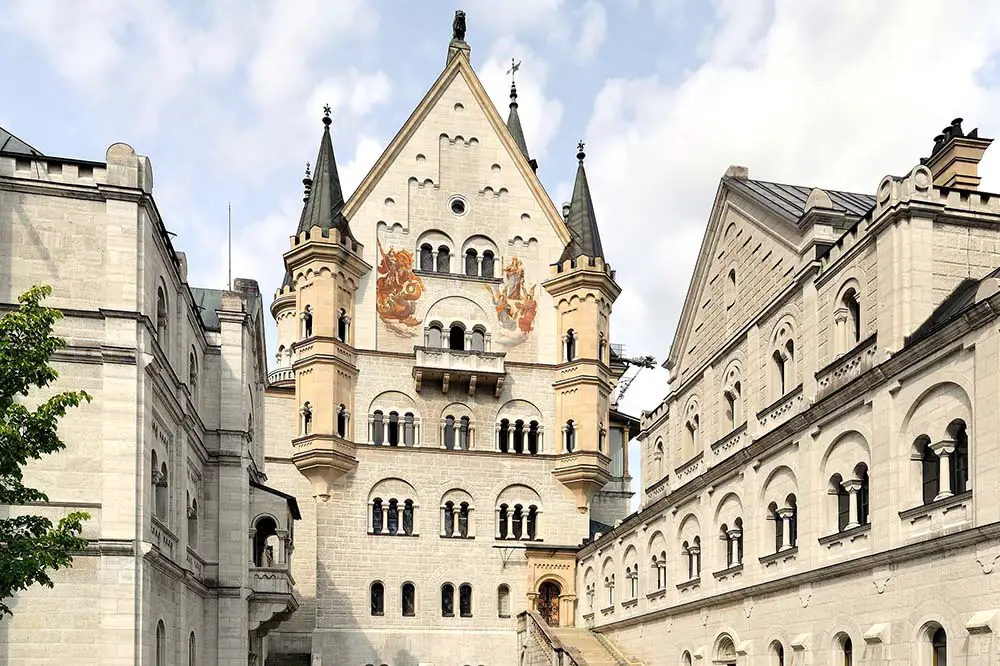
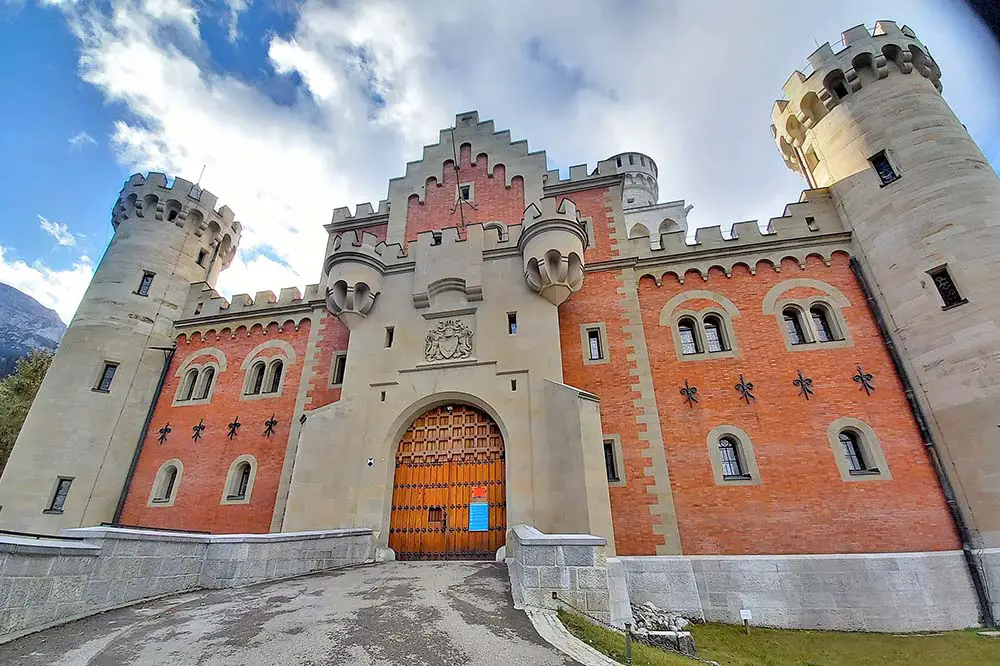
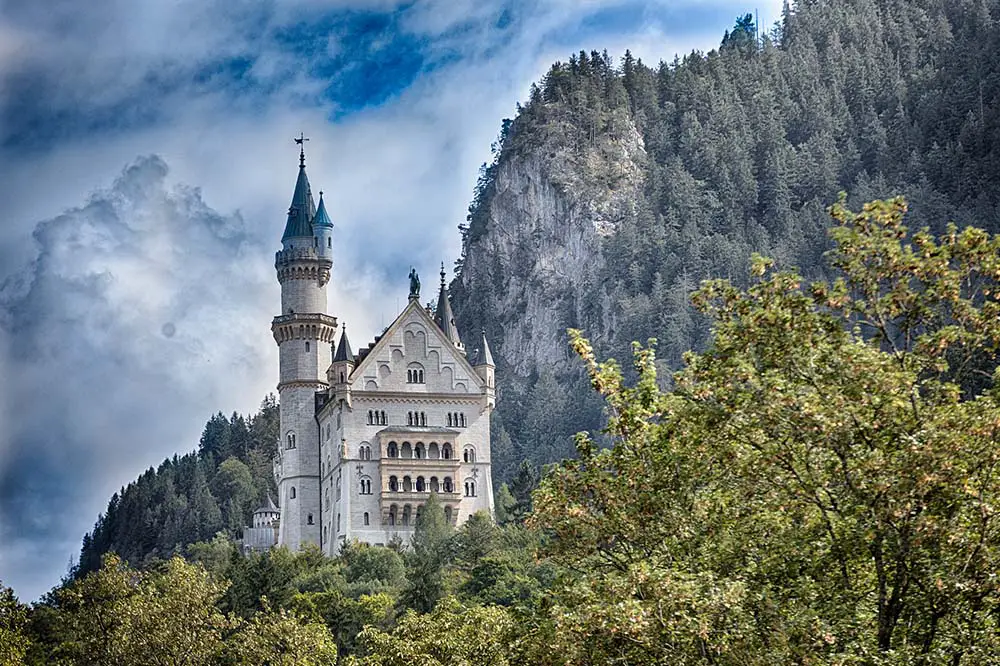

Left: Eric Marty on Unsplash & Right: Luis Fernando Felipe Alves on Unsplash
